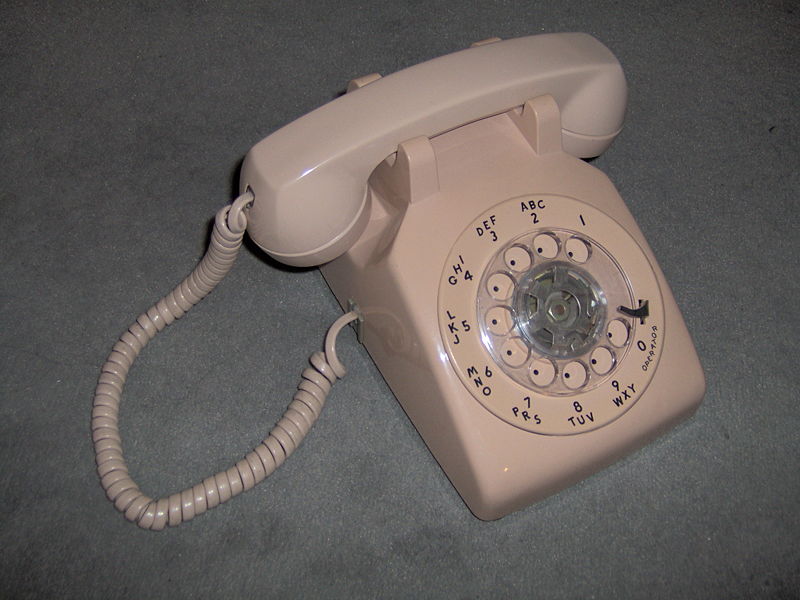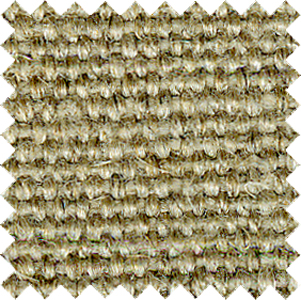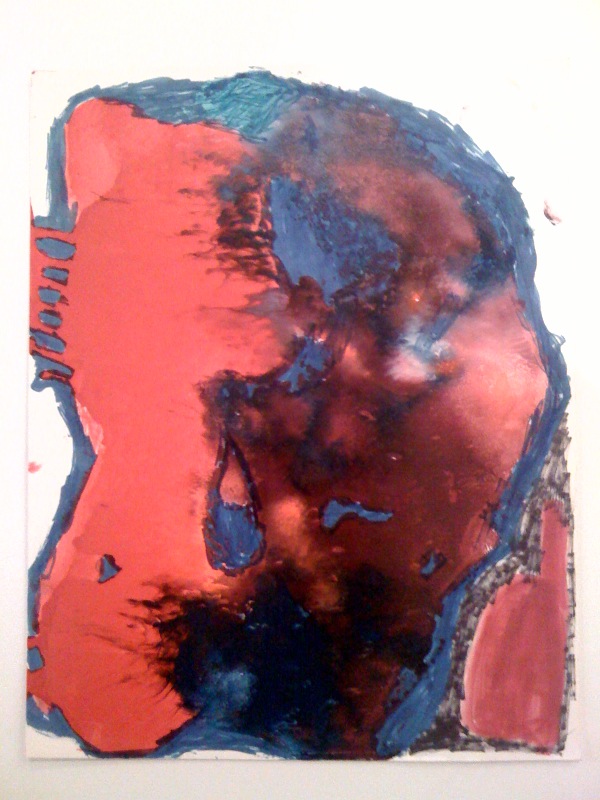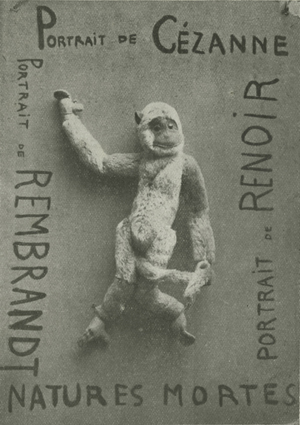Schwarz
View current page
...more recent posts
in case youve been living under a rock, heres the cast of the simpsons (and their voices) on inside the actors studio, 1st aired 2/03. enjoy
Before anyone gets the wrong idea, followed by writs from the mighty Apple Inc, no one is accusing Ive of copying Rams, although there is, quite clearly, a synergy between their work separated by several decades. Actually, Rams admires Apple, as he once did Sony, two corporations that have followed much the same design philosophy as Braun did from 1955 when Rams, then just 23 years old, joined its design team. Rams was head of design at Braun from 1961 until 1995; two years later, Ive was promoted to Apple's head of design; it was as if Rams' baton had been handed on to a younger talent, 45 years his junior, working for a different company in another country.
5,000 dollars, peso neto, 200 yen, salt, milk, lead, asbestos, carbon, tar (and feathers), dextrose
Call it what you like, Citybike, Vélib or StadtRAD. More than one hundred European cities have launched rent-a-bike projects allowing people to use pedal-power to whizz from Point A to Point B. But will the bike sharing fad last?
gaudi door pulls, key holes, etc.
thrillbillies 09 season
cleveland art
via vz
go glen cambell!
A gunny sack holds approximately 100 pounds of potatoes. As a result, the modern measurement unit of potatoes is still the "sack."
Beige, The People's Color. Er, white people that is.

In 1954 the telephone statrted to become a decorative household item. Although some colored telephones were available much earlier, they did not gain widespread popularity until the advent of the "500" color series. The five basic colors currently available are white, beige, green, pink and blue.
So, why beige?
For probably the same reasons, the colour Beige also found it's way quickly into the various accessories and peripherals you'd be most likely to find around computers - keyboard, mice, speakers, printers, scanners - the list goes on... Like time, opinions and fashions inevitably move on, and black and silver became more synonymous with technology - it only made sense for computers to follow suit. Even more recently, pure white is becoming more and more commonplace - mainly in Apple manufactured devices, but it's a colour which is starting to appear more often from other manufacturers as well.further reading: Beige box, priven's evil color, apple II, putty, desert sand
Another widely suggested reason for the choice of the colour beige was more psychologically driven. When PC's first started to rise in popularity and quantity, they were strange new technology, which frankly, scared and intimidated a lot of people who were less technologically comfortable/capable. Beige, being a soft, gentle colour which is easy on the eyes, may well have been an attempt to take away some of the fear the electronics inside the boxes instilled in these people. I find this easy to believe, and, like the default colour of technology mentioned above, it logically progresses forward into a time when more and more people were becoming more comfortable with technology. As it became less intimidating and more commonplace, there was less reason to try to hide it away in nondescript Beige boxes. With this reasoning in mind, the recent rapid transition to stark black and shining silver computers also makes reasonably good sense.
A third, more practical reason for beige is that it is relatively easy to keep clean. Marks don't show up on Beige quite as quickly or as obviously as they do on pure white or jet black. The use of Beige helped to maintain the clean, efficient image offices were supposed to project.
The fourth and final reason for the early predominance of Beige which I came across was cost. Beige may have been the colour that the pellets used in plastic mass-production came in originally. Keeping the same colour allowed for cost savings as there was no dye cost, and no real costs associated with quality-control having to ensure the same shade of plastic was being produced over and over again. Another likely cost issue was compatibility. An industry wide standard colour meant that externally visible component manufacturers - the people that made CD-Rom and Floppy drives and the peripheral manufacturers - could make one product, and sell it to several customers. Economies of scale would have encouraged system manufacturers to stick with the colour once it was in widespread use - buying off-the-shelf components and peripherals has to be cheaper than having them custom made just for a different colour. This probably made the Beige colour usage somewhat self-perpetuating. The parts were beige because the computers were, and the new computers were beige because the parts were, and the factories were already set up to produce the plastics in beige."
18. One must distinguish between naďve and deliberate Camp. Pure Camp is always naive. Camp which knows itself to be Camp ("camping") is usually less satisfying.
'65 IH scout
THE GENIUS OF DESIGN
Models of the Wright Brothers' Aircraft (1900-1903)
Wright Airplane Replicas
models and model kits
The response by both BP and the federal government to the blowout made a bad situation exponentially worse. Inexplicably, despite causing the largest environmental disaster in the history of our nation, the government decided to let BP dictate how to deal with the situation. Every responsible federal agency including the Coast Guard, the Environmental Protection Agency (EPA), the Federal Aviation Administration (FAA), Department of Homeland Security (DHS), Department of the Interior (DOI), and National Oceanic and Atmosphere Administration (NOAA) was placed at BP's disposal and instructed to cooperate. On the few occasions where an agency director moved to rein BP in, such as Lisa Jackson's attempt to halt the use of the highly toxic Nalco Corexit dispersant, the Obama administration moved decisively to support BP without regard for the health and welfare of the American public or the environmental consequences. The Coast Guard, using C130s, deployed an unprecedented amount of Corexit over the Gulf, at least 1.8 million gallons. BP also deployed Corexit deep underwater at the Source, which had never been done before with entirely unknown impacts. Not a single NATO ally nation allows the use of dispersants (much less Corexit) in response to an oil spill except as a last resort and then exceptions are granted only after formal consideration.
The dispersant moved the oil below the surface and out of sight into the water column below, thereby presenting a more acceptable image for media consumption. Basically an industrial solvent, when combined with the crude oil creates a more potent toxic brew with greater potential for damage to biological organisms. Once the oil has been "dispersed," more accurately described as sunk in smaller balls, it became virtually impossible to collect by traditional cleanup methods such as skimming. The highly toxic Corexit 9527, which has approximately 60% 2-butoxyethanol by volume and is know to bioaccumulate and cause genetic damage, was admitted to being used initially. Authorities claimed those supplies were exhausted by mid-May. On the contrary, containers of 9527 were discovered as late as mid-August. BP and the government also claimed that all dispersant use was terminated in mid-July, aside from a very small amount. This too was not true. Corexit was being deployed on Dauphin Island as late as mid-September, and reports by locals continued though early October. Independent tests along the Gulf Coast from Louisiana to Florida continued in August and September to show markers for Corexit in both air and soil samples at dangerously high levels, including inland waterways, estuaries, and lagoons.
The actual loss of marine life due to the blowout will never be known due to a total lack of transparency on the part of BP, its subcontractors, and the government agencies involved. When the oil began moving in toward the coast and shortly after the first pictures of a dead sperm whale made international news, the FAA closed off the airspace over the Gulf to prevent media from acquiring images from planes. Also, marine traffic was severely restricted by the Coast Guard, and no non-essential personnel were allowed on the water near any cleanup operations. No cell phones, cameras or electronic devices were permitted on board any BP contracted boats in the Gulf during that time. Finally, new regulations were put in place that made it a class 3 felony punishable by a $40,000 fine and imprisonment to get closer than 60 feet of any cleanup operation. Cleanup workers were ordered not to talk to anyone about any aspect of the spill or face immediate termination. Surveillance cameras were placed along the beaches to monitor worker contact with media and the public.
flight of the concorde
via things


Duplicolor's Bed Armor Truck Bed Liner with Kevlar is a water-based, rubberized polyurethane coating ideal for protecting truck beds and all other metal, aluminum, fiberglass & wood surfaces. Bed Armor DIY Truck Bed Liner with Kevlar offers superior adhesion, impact resistance and flexibility. An attractive, textured satin black finish prevents cargo from slipping and provides the ultimate in truck bed protection. One gallon of Bed Armor will normally cover a short truck bed. Full-size beds will require an additional quart.

new era for the tavern on the green
pfish shreds it
via jq
Adam Purple / George Bliss
As little as a year or two ago, it was possible to be skeptical about the future of electronic publishing, but it's becoming increasingly clear that Kindles, iPads, and the like will soon be the dominant medium—if, indeed, they aren't already. As a novelist this bothers me not at all; though I prefer paper, I don't care how other people read, so long as they do. But novels and nonfiction aren't the only things that come in book form. Unless you're very dedicated, and very well-traveled, most of the art and photography you've seen has been on the printed page as well. Will these, too, gradually be replaced with e-books? I suspect not, and I certainly hope not, but to understand why, we need to indulge in a little metaphysics.I agree, mostly. with the increase of ebook popularity, printed art (as well as architecture and photography) books enjoy increased value added appreciation. a well printed art book is the next best thing to having a pricier printed edition or original artists work. catalogs too. its still a pleasurable and gratifying practice to own art books and keep them handy on your book shelf. and a great way to collect artists your interested in. its so convenient to pull out a book you want to share with some one or check a reference. just never loan them out as they tend to have a fairly poor return rate. i havent bought an electronic reader but i get their merits and i know avid readers who love them. still, the ebook or web browser art experience resides a full peg lower in value. there is of course the net art exception. lets not expect dead tree flip book gifs to replace an on screen gif experience and chris ashley is an html master to name a couple.
I don't know the exact circumstances of Sonic Youth's decision, so I'm not comfortable saying they did it wrong. But a lot of the things they were involved with as part of the mainstream were distasteful to me. And a lot of the things that happened as a direct result of their association with the mainstream music industry gave credibility to some of the nonsense notions that hover around the star-making machinery. A lot of that stuff was offensive to me and I saw it as a sellout and a corruption of a perfectly valid, well-oiled music scene. Sonic Youth chose to abandon it in order to become a modestly successful mainstream band-- as opposed to being a quite successful independent band that could have used their resources and influence to extend that end of the culture. They chose to join the mainstream culture and become a foot soldier for that culture's encroachment into my neck of the woods by acting as scouts. I thought it was crass and I thought it reflected poorly on them. I still consider them friends and their music has its own integrity, but that kind of behavior-- I can't say that I think it's not embarrassing for them. I think they should be embarrassed about it.
red and white airport checker pattern mountain side

25 oz 55% hemp 45% cotton canvas
21 oz hemp canvas
20 oz pinwheel and herringbone 52% hemp 48% flax
17 oz hemp linen
News that Mr. Schnabel is turning to rentals is the latest twist in the Palazzo Chupi soap opera, which has taken on a life of its own. Next week Mr. Schnabel is scheduled to auction off a Picasso painting he has owned for 20 years, “Femme au Chapeau,” in order to pay back loans he took out to build the project. (If you look closely, you can see the Picasso—or a copy if it—hanging in the living room in the pictures in the old listing for one of thea schnabel picasso copy
paint quality

Painting by John Fahey.
From a series of work that John Fahey made while staying in Jersey City in 1998.
Oil / spray paint / magic marker on posterboard. Unsigned.
Size: 11"x14"
all in this tea / recommended
The Birds
Of course, after reading the piece in Shindig, I decided to check YouTube and surprise, there it is, the only known footage of the Birds in their prime to surface (so far), taken from a low budget horror flick-- The Deadly Bees (1967), which I've never seen. Yes, I miss the simple pleasures of record stores and newsstands, but being able to call up obscure film footage at your fingertips is, I guess, at least some sort of compensation.
2010 year of the gif!
if anyone has seen a gulf spill or toxic sludge gif please point us in their direction
How does the sludge get produced and how could it escape?
When aluminium is extracted from bauxite via the so-called Bayer process, red sludge forms as a by-product. The sludge is normally kept in large reservoirs where its fluid and solid components separate into water and mud.
What caused the accident is yet unclear, but it is likely that heavy rain has caused the dam containing the reservoir to break.
It is also possible that the reservoir was just not large or strong enough to hold the sludge it was filled with.
What is the chemical composition of the sludge?
It contains mainly fluoride, sulphate and aluminate, but also chrome, nickel, manganese and heavy metals such as lead. Its arsenic concentration is at least a hundred times above the allowed threshold for drinking water.
garage bands on tee vee #2 - thee hounde
crystal set
fedelipac cart machine
Collecting and preserving New Media art
The inherently ephemeral nature of much New Media art, as well as its often unfamiliar aesthetics and technologies, posed a challenge to gallerists and collectors. Some artists provide a CD-ROM or other storage device containing a copy of the work (e.g., the sale of a floppy disk containing The World's First Collaborative Sentence to collectors in 1995). Others produce works that take the form of physical objects, such as John F. Simon, Jr.'s wall-mounted "art appliances," ( p. ), which recall framed paintings. Feng Mengbo's Iris prints from his interactive CD-ROMs (image), and Cory Arcangel's silk-screens of images from his Game art works (p.), have had commercial success, partly because such forms are familiar and relatively easy to exhibit. Despite the anti-commercial attitude of many New Media artists and the technological hurdles of presenting their work in galleries, some dealers have sustained significant New Media art programs. Notable examples include Postmasters Gallery, Sandra Gering Gallery, and Bryce Wolkowicz Gallery in New York, Bitforms Gallery in New York and Seoul, and GIMA in Berlin.
Because of its often immaterial nature and its reliance on software and equipment that rapidly becomes obsolete and unavailable, New Media art is particularly difficult to preserve. Just as most of Eva Hesse's latex sculptures from the 1960s and 70s have deteriorated, many works of New Media art will soon be beyond repair. In 2001, a consortium of museums and arts organizations founded the Variable Media Network. These included the Berkeley Art Museum/Pacific Film Archives in Berkeley; Franklin Furnace, the Guggenheim Museum, and Rhizome.org in New York, the Daniel Langlois Foundation for Art, Science, and Technology in Montreal, the Performance Art Festival + Archives in Cleveland, and the Walker Art Center in Minneapolis. Dedicated to finding ways to preserve works made with non-traditional, ephemeral materials, such as Nam June Paik's video installations, Felix Gonzalez-Torres's piles of give-away candies, and Marc Napier's Net art works, the Network has developed a number of case studies and publications, and a questionnaire that organizations can use to gather preservation-related information from artists. Notable strategies for preserving works of New Media art include documentation (e.g., taking screen shots of Web pages), migration (e.g., replacing outdated HTML tags with current ones), emulation (software that simulates obsolete hardware), and recreation (reproducing old work using new technology).
As of this writing, it remains unclear whether New Media art has run its course as a movement. Artists have always experimented with emerging media, reflecting on and complicating the relationships between culture and technology, and will certainly continue to do so. The explosion of creativity and critical thought that characterized New Media art from the mid-1990s to the early 2000s shows no sign of slowing. But as the boundaries separating New Media art from more traditional forms like painting and sculpture grow less distinct, New Media art will likely be absorbed into the culture at large. Like Dada, Pop, and Conceptual art, it may end as a movement but live on as a tendency?a set of ideas, sensibilities, and methods that appear unpredictably and in multiplicitous forms.

dada lot
The program of this performance, arranged, as usual, by Picabia, revealed a resuscitated remark of Tzara as: ‘Dada Corporation for the Improvement of Ideas.’ Picabia’s picture, ‘Portrait of Cézanne,’ was shown at this demonstration; having searched in vain for a live monkey for the ‘still-life,’ the artist finally showed the picture, as illustrated.
A container based student housing, Cite A Docks was built in Le Havre, France, designed by Cattani Architects. This housing consists of 100 apartments for students.

His expressionist style influenced successive generations of American artists – the young Jackson Pollock kept a photograph of Orozco’s Prometheus mural in his studio, and declared it to be “the greatest painting in North America.”
JUNK SAILING TO HAWAII ON 15,000 PLASTIC BOTTLES AND A CESSNA 310, TO RAISE AWARENESS ABOUT PLASTIC FOULING OUR OCEANS.
